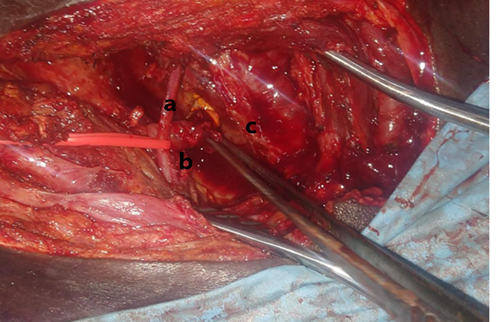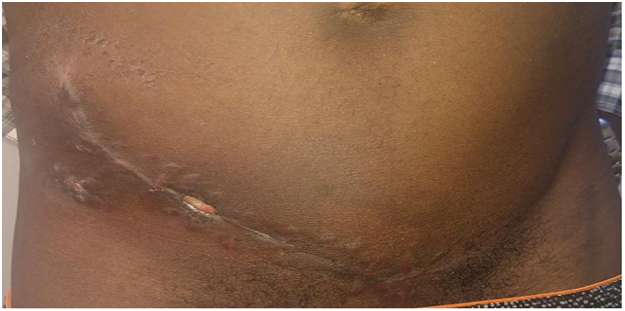Secondary ureteral re-implantation for persistent urinary leakage following renal transplantation in a Nigerian pediatric patient: a case report
Olalekan Olatise1, Martin C. Igbokwe2, Sadiq Abu2, Adegboyega E. Faponle1, Oluwatoyin I. Ameh1, Stephen O. Asaolu3, Michael O. Muoka3.
1Department of Medicine, Zenith Medical and Kidney Centre, Abuja, Abuja, Nigeria; 2Department of Surgery, Zenith Medical and Kidney Centre, Abuja, Abuja, Nigeria; 3Department of Clinical Research, Zenith Medical and Kidney Centre, Abuja, Abuja, Nigeria
Introduction: Renal transplantation remains the gold standard renal replacement therapy for End stage renal disease worldwide and urinary leakage is an early urologic complication that may arise following renal transplantation. The site of uretero-neocystostomy is the commonest anatomical location of the leakage. Surgical intervention by renal allograft exploration and secondary uretero-neocystostomy is usually reserved for circumstances when all conservative approaches have failed. Proper diagnosis of urine leak and timely intervention will help in mitigating the attendant morbidity as well as risk of graft loss.
Case Report: A 15-year old male with ESRD secondary to chronic glomerulonephritis who had a living related renal transplantation developed significant peri-allograft urine collection and leakage from the previous drain site 5 weeks after kidney transplant. He had experienced a seemingly smooth post-operative period with timely removal of his wound drain and Doppler ultrasound scan confirming a satisfactory renal allograft function.

His renal function had normalised three days following transplant with serum urea and creatinine values of 5.4mmol/L and 96umol/L respectively. Few days following the removal of the double j stent, he had a progressively increasing peri-allograft collection, worsening pain, and swelling over the transplanted area with oliguria and drainage from the surgical scar. Initial conservative treatment of the urine leak by urethral catheterization and percutaneous drainage of the collection under image guidance were unsuccessful. He has a re-exploration with secondary uretero-neocystostomy and is doing very well.


Conclusion: Urine leak remains a common urological complication in the early post-transplant period and the manifestation can be delayed up to 1 month Post –transplantation following removal of DJ stents. There may be need for open surgical intervention if conservative treatment is unsuccessful. Timely open surgical exploration of the allograft is associated with a good outcome with minimal morbidity and less risk to allograft function when non-operative management fails.

right-click to download
